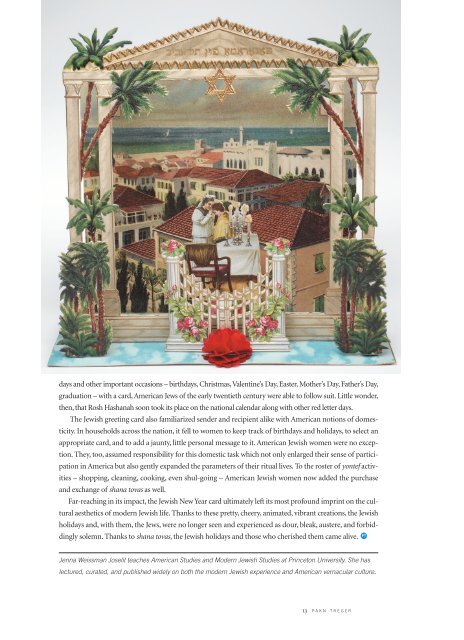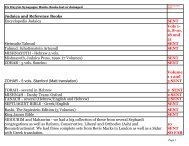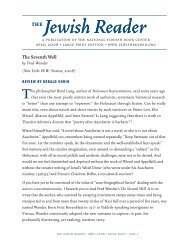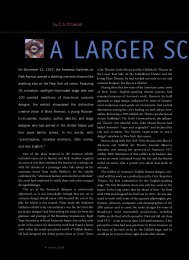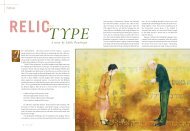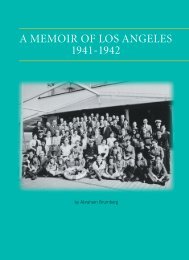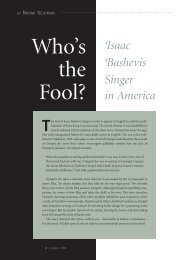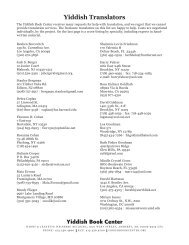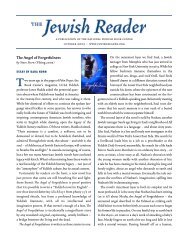Holiday Cheer - Yiddish Book Center
Holiday Cheer - Yiddish Book Center
Holiday Cheer - Yiddish Book Center
You also want an ePaper? Increase the reach of your titles
YUMPU automatically turns print PDFs into web optimized ePapers that Google loves.
days and other important occasions – birthdays, Christmas, Valentine’s Day, Easter, Mother’s Day, Father’s Day,graduation – with a card, American Jews of the early twentieth century were able to follow suit. Little wonder,then, that Rosh Hashanah soon took its place on the national calendar along with other red letter days.The Jewish greeting card also familiarized sender and recipient alike with American notions of domesticity.In households across the nation, it fell to women to keep track of birthdays and holidays, to select anappropriate card, and to add a jaunty, little personal message to it. American Jewish women were no exception.They, too, assumed responsibility for this domestic task which not only enlarged their sense of participationin America but also gently expanded the parameters of their ritual lives. To the roster of yontef activities– shopping, cleaning, cooking, even shul-going – American Jewish women now added the purchaseand exchange of shana tovas as well.Far-reaching in its impact, the Jewish New Year card ultimately left its most profound imprint on the culturalaesthetics of modern Jewish life. Thanks to these pretty, cheery, animated, vibrant creations, the Jewishholidays and, with them, the Jews, were no longer seen and experienced as dour, bleak, austere, and forbiddinglysolemn. Thanks to shana tovas, the Jewish holidays and those who cherished them came alive.PTJenna Weissman Joselit teaches American Studies and Modern Jewish Studies at Princeton University. She haslectured, curated, and published widely on both the modern Jewish experience and American vernacular culture.13 PAKN TREGER


